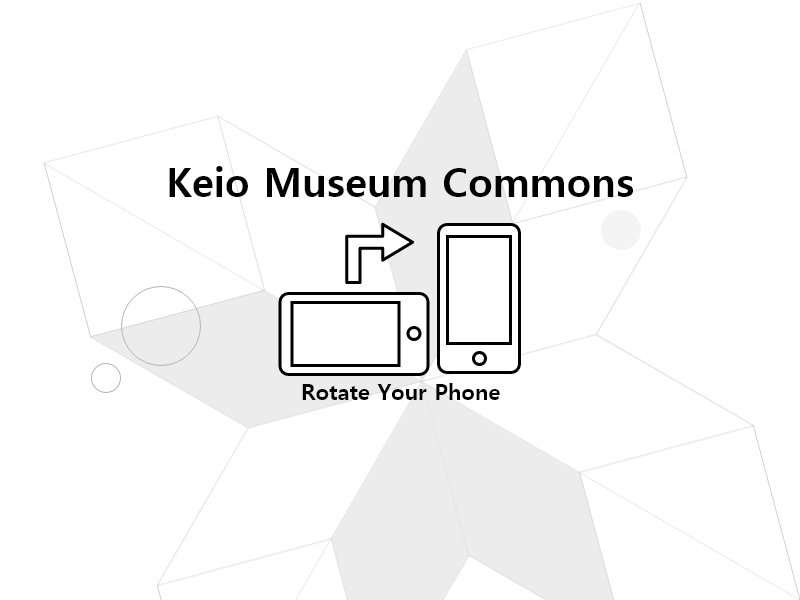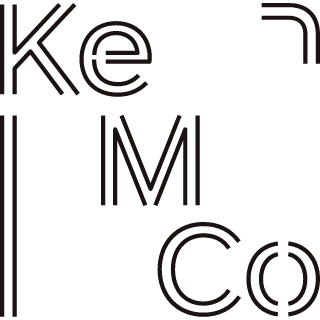KeMCo New Year Exhibition 2024 Where the Dragons Are Special Feature: Daybreak of Chinese Style Calligraphy in Premodern Japan: Hayashi Razan and His Community
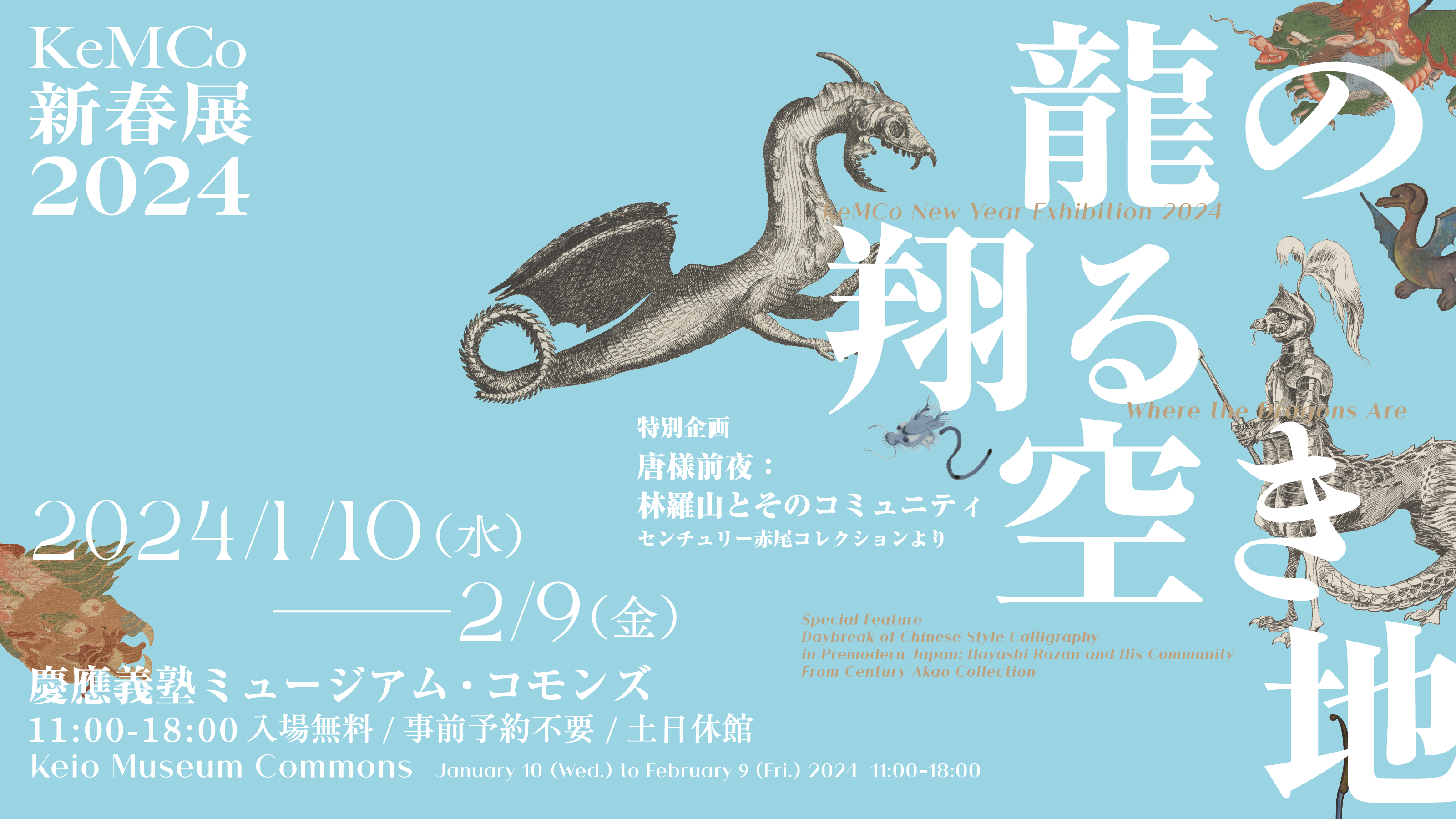
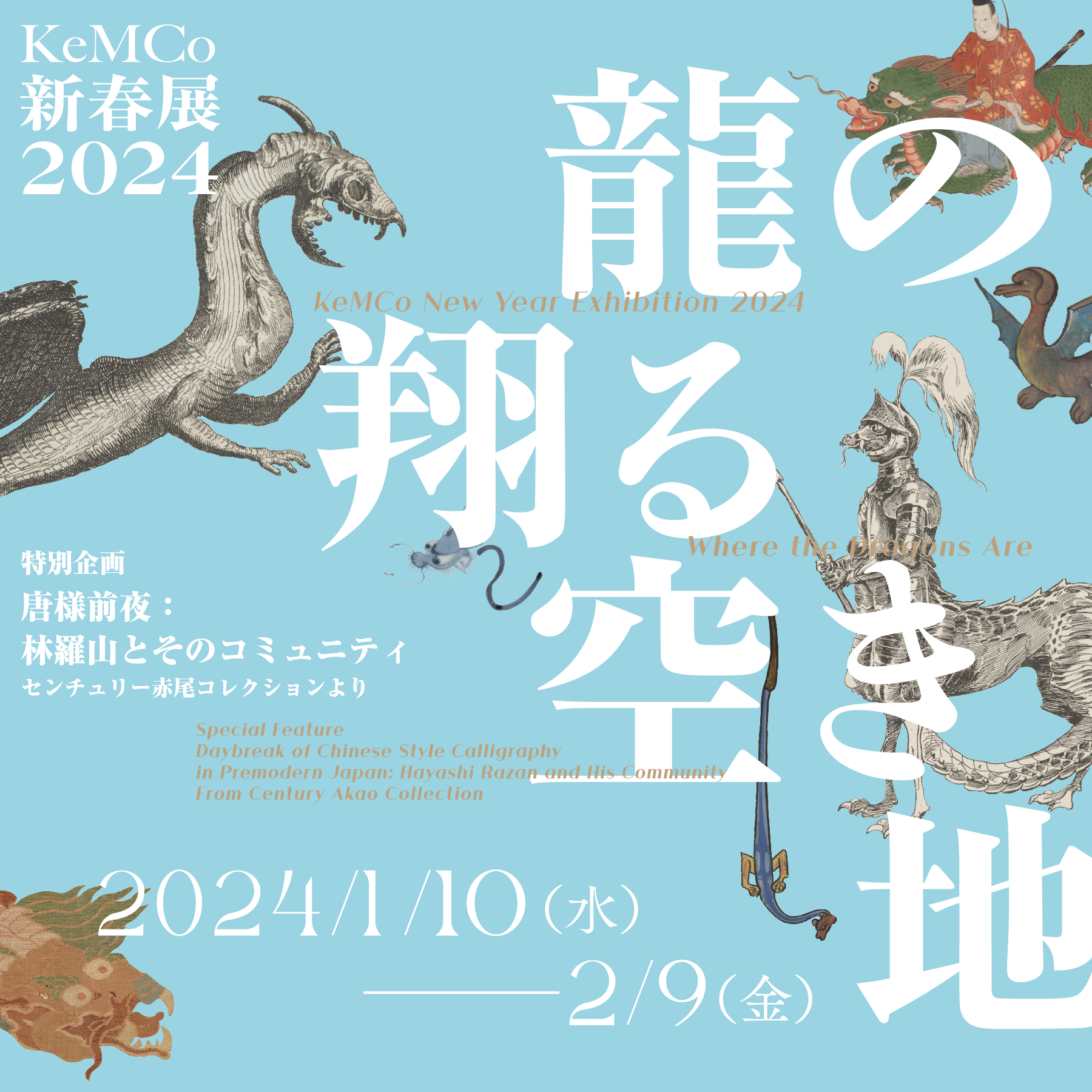
The Chinese zodiac sign for 2024 is the dragon, the only fictional inhabitant of the zodiac. Dragons have long been represented in Eastern and Western artifacts in various ways – controlling nature, hiding in secret locations, acting as guardians, fighting, and much more. To start the New Year, this exhibition brings together dragons from across the collections of Keio University and takes you on a journey to the home of these mythical animals in their diverse forms.
Date
Wednesday, January 10 – Friday, February 9, 2024
Closed on Saturdays and Sundays
Special opening on Saturday,: January 20 and February 3
(Temporary Closing day: Monday, January 22 and Monday, February 5)11:00 – 18:00
Venue
Keio Museum Commons (Mita Campus East Annex)
Audience
Open to the public
Cost
Admission free
Enquiries and
bookings
Special Feature: Daybreak of Chinese Style Calligraphy in Premodern Japan: Hayashi Razan and his Community, from the Century Akao Collection
As the times change, culture also changes. Calligraphy is no exception. In the world of Chinese poetry and writing in Japan during the shift from the Middle Ages to the early modern period, the dominant role shifted from Zen monks, who were the leaders of Gozan literature, to scholars of Chinese classics and kanshi poets who both served the shogunate and ruling class. Early modern Chinese style calligraphy, generally known as Karayo, evolved in the late 17th century with the arrival of Huangbo priests and calligraphy handbooks from the Ming dynasty. This special feature focuses on the first half of the 17th century, the eve of Karayo, and showcases calligraphy by the leaders of the new Chinese studies and Chinese poetry, particularly Hayashi Razan and his contemporaries.
Exhibition Highlights
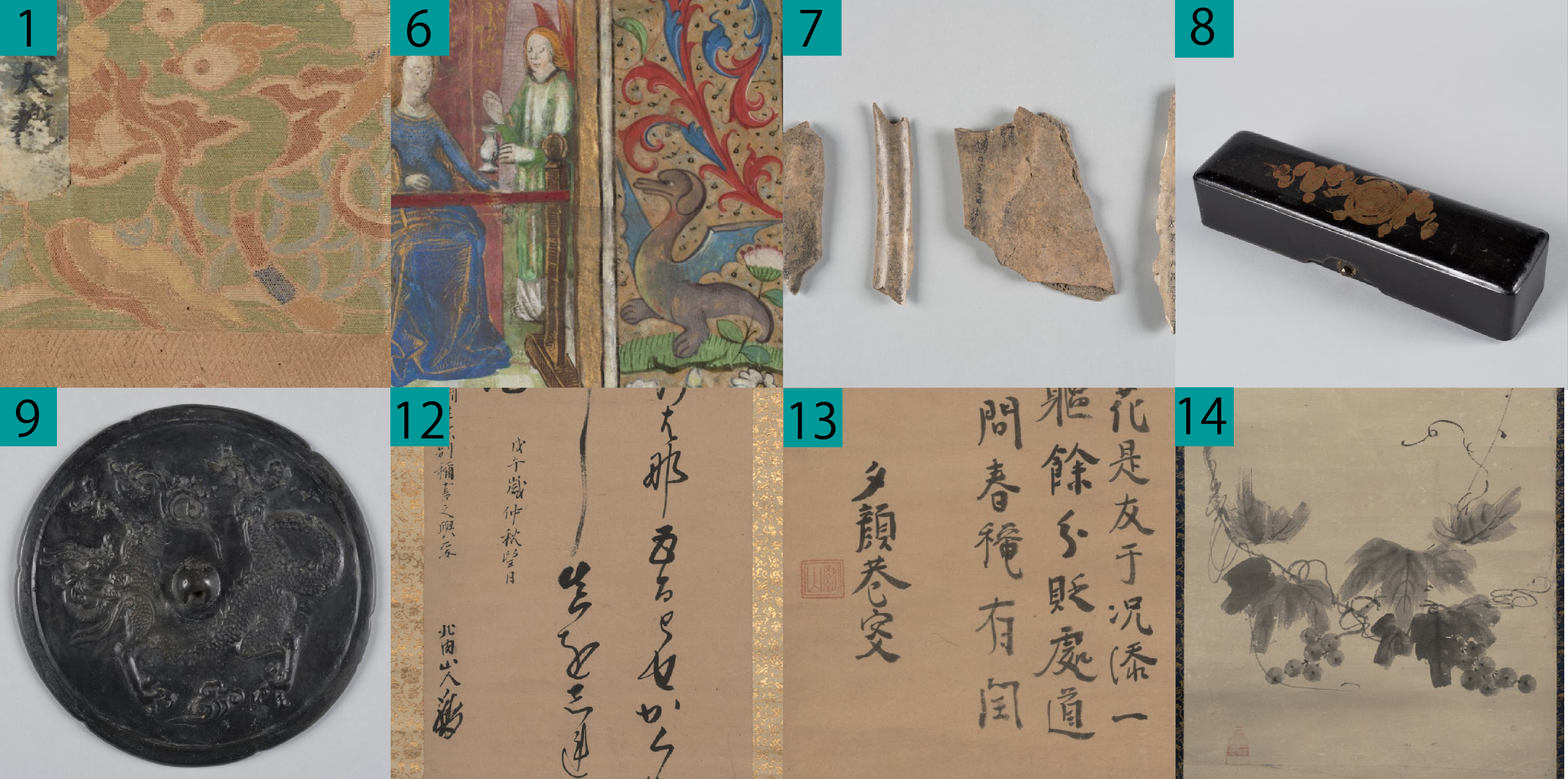
1 Eiga no Taigai, compiled by Fujiwara no Teika, mid-to-late Muromachi period.
2 Red-stamped Official Document by Takeda Katsuyori, 1574.
3 Letter by Ii Naomasa, 1602.
4 Mundus Subterraneus, Athanasius Kircher, Amsterdam, 1682.
5 Tokyo Famous Places, 1st Holy Place, Asakusa Kinryuzan Temple Ground, Utagawa Hiroshige III, 1883.
6 Book of Hours in Latin (‘O Intemerata’), Louen (?), c. 1480.
7 Oracle Bone with scripts, 14-11th century BCE.
8 Letter Box with Clouds, Dragon and Centipede in Makie, Muromachi period.
9 Hollyhock-shaped Octagonal Mirror with Coiled Dragon, 8th century.
10 Single-line Calligraphy by Muan Xingtao, 17th century.
11 Mediational Life of Animals and Plants (from the archive of HIJIKATA Butoh body movements), performed by Yukio Waguri, 2005
12 Waka Poem by Fujiwara Seika, 17th century.*
13 New Year Calligraphy by Hayashi Razan, 1648.*
14 Grapes, drawn by Shokado Shojo and inscribed by Ishikawa Jozan, 17th century.*
Repository: 1 = Keio Institute of Oriental Classics (Shido Bunko), 2-6 = Mita Media Center (Keio University Library), 7 = Department of Archaeology and Ethnology, 8-10, 12-14 = Keio University (Century Akao Collection) ,11 = Hijikata Tatsumi Archive at Keio University Art Center
Works marked with an asterisk (*) are displayed in the special feature section.
Click here for a list of exhibited works
Gallery Talk
“Daybreak of Chinese Style Calligraphy in Premodern Japan: Hayashi Razan and his Community”
Monday, January 15, 2024, 14:00-15:00
Presented by Prof. Takashi Horikawa (Professor at the Keio Institute of Oriental Classics)
Gallery talks take place in Japanese only. Free admission, advance reservations required.
Click here to make a reservation. Reception closed
Organized by Keio Museum Commons / Keio Institute of Oriental Classics (Shido Bunko)
Cooperation by the Department of Aesthetics and Science of Arts, Keio University Faculty of Letters / Department of Archaeology and Ethnology, Keio University Faculty of Letters / Fukuzawa Memorial Center for Modern Japanese Studies, Keio University / Historical Documents Room, Keio University Faculty of Letters (Komonjoshitsu) / Mita Media Center (Keio University Library) / Keio University Art Center / Keio University Hiyoshi Media Center (Hiyoshi Library) / Keio University Shinanomachi Media Center (Kitasato Memorial Medical Library)
